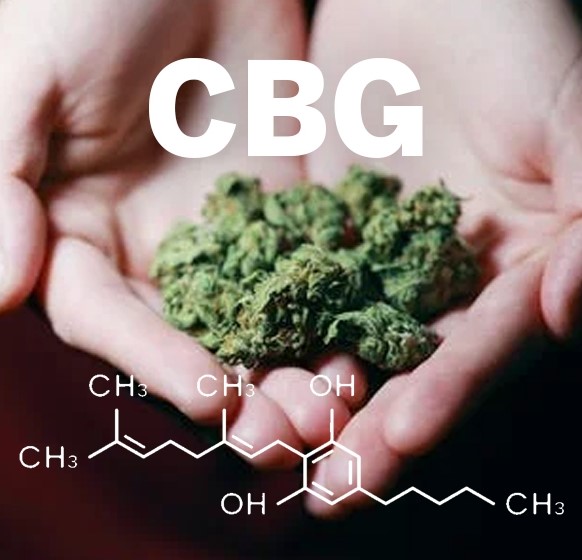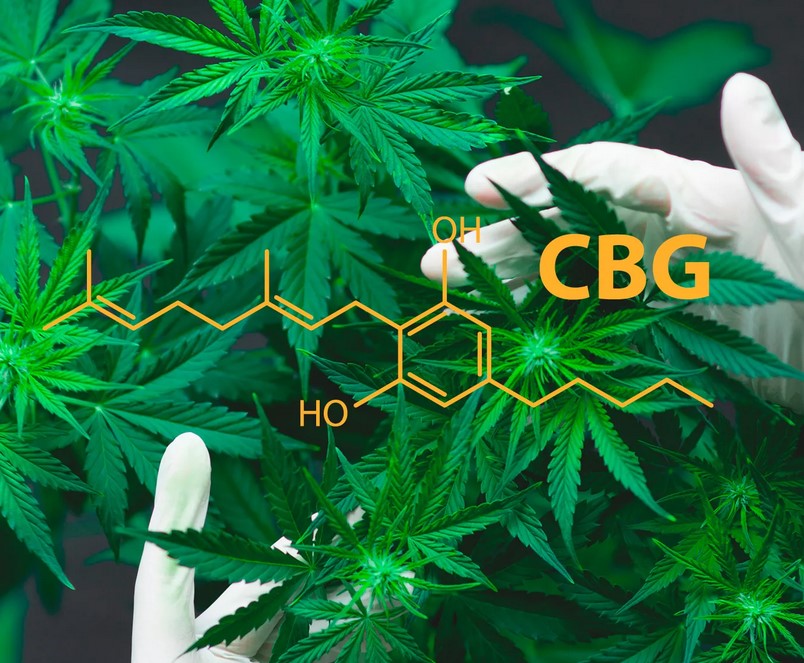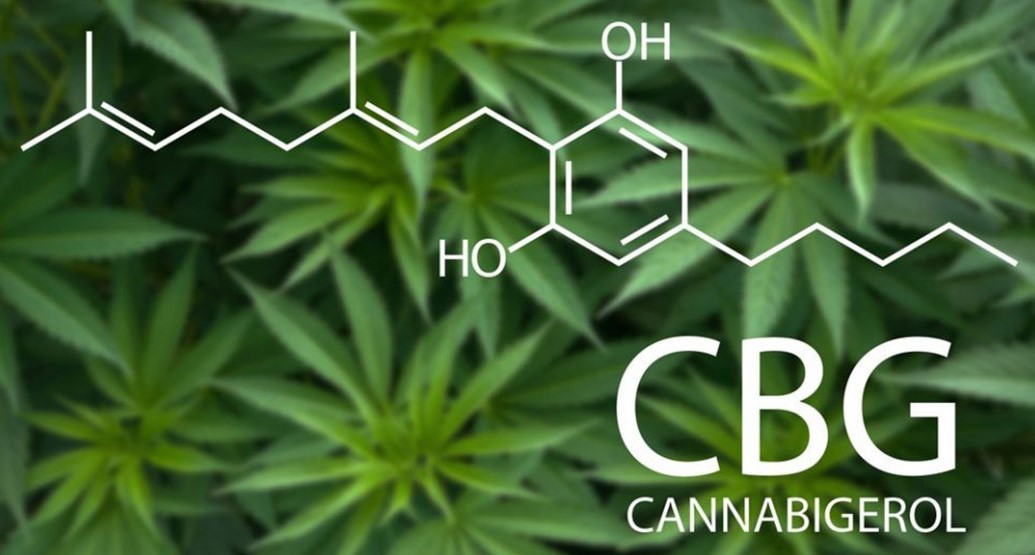Cannabinoids are chemical components present in cannabis, which explain the therapeutic advantages linked to medical marijuana. Each cannabinoid has its own set of characteristics that may be useful in a variety of diseases. Researchers must look at as many cannabinoids as possible to truly comprehend how medical marijuana might help. Cannabigerol (CBG) is a lesser-known cannabinoid that isn’t widely available and can’t be found in large amounts. Despite this, it’s critical to understand why it’s so significant.
What You Need to Know About Cannabigerol (CBG)
Cannabigerol (CBG) is a chemical found in hemp that inhibits the psychoactive and metabolic effects of THC. CBG really inhibits both the euphoric sensation and metabolism caused by THC. CBG has anti-inflammatory properties, destroys cancer cells, is antibacterial, and promotes neurogenesis.
Despite this, there have been no thorough studies on CBG at this time, and hemp strains never contain a significant quantity of it. It appears that cannabigerol is present in hemp varieties at a concentration of around 0.2 to 2 percent. Every sort of medicinal marijuana has a trace amount of cannabigerol, which can range from 0.1 to 1 percent.
THC is the most euphoric psychotropic cannabinoid in Cannabis, but it’s less harmful than some of its relatives. CBG, on the other hand, is more abundant in cannabis plants with higher THC levels. Cannabigerol-rich marijuana strains may be produced by growers interested in producing a high-CBGE strain by testing cannabis plants aged 6 weeks or older.

CBG, like the other cannabinoids, has a variety of uses that can benefit people from all over the world who are suffering from a variety of ailments. It is especially useful in treating conditions that affect the central nervous system. Here are some examples:
- Chronic pain
- Skin disease
- Neurological illnesses
One of the most significant reasons for the government’s attempts to limit cannabis use and distribution is the psychoactive impact of THC. Fortunately, research into marijuana’s health benefits has produced data that makes their efforts to prohibit marijuana seem ill-advised.
How Does CBG Function?
Cannabigerol, unlike CBG, does not produce intoxication comparable to THC. However, it can effectively block the response you have to THC. Because it promotes peace and harmony, it may also assist other cannabinoids in doing the same. Cannabigerol acts as an agonist for cannabinoid receptors such as CB1 and CB2, similarly to all cannabinoids. Unlike its counterpart THC, cannabigerol has a less disruptive impact on receptors owing to its lack of activity at CB1 and CB2 (due to being a non-intoxicating cannabinoid).
CBG may enhance anandamide levels in the body, which is a cannabinoid that is naturally produced. CBG has been found to have a variety of biological functions, including sleep, hunger, and memory.
Anandamide acts through CB1 and CB2 receptors in the brain, much like THC. Cannabigerol inhibits the activity of gamma-aminobutyric acid (GABA). GABA is a neurotransmitter that regulates nerve function.
Cannabigerol has a more significant influence on GABA utilization than THC or CBD. CBG balances the body’s fight-or-flight response. Its role in keeping receptors active indicates that it might have additional applications below.
- Sedative
- Slows down noradrenaline release
- Manages fight or flight
- Reduces vascular smooth muscle
- Mimics the reduction of high blood pressure
- Lessens smooth muscle mobility in the gastrointestinal tract
- Offers analgesia effects
- Stops the disintegration of lipids into fatty acids
Cannabigerol has a lot of promise as an innovative treatment for a range of illnesses. The fact that it can not only affect the central nervous system but also treat depression symptoms without producing intoxication makes it even more appealing to researchers and patients around the world.
How is cannabigerol made?

CBG is a minor cannabinoid since it is present in most cannabis strains at very low levels (usually less than 1 percent). Cannabigerolic acid, the precursor to the three primary cannabinoids: tetrahydrocannabinolic acid (THCA), cannabidiolic acid (CBDA), and cannabichromenic acid (CBCA), is created by cannabis plants.
CBGA is broken down by enzymes in the plant and “directs” itself toward one of the three lines. The acids are exposed to UV light or heat, and there you have it: they’re converted into THC and CBD. CBGA is changed to either THCA or CBDA as soon as feasible in most strains. As a result of how these compounds are produced, more THC always implies less CBG and CBD (and vice versa).
The Super Skunk strain, for example, has roughly twice the CBG content of other cannabis varieties. Other strains with relatively more CBG than others include White CBG, Jack Frost CBG, and Super Glue CBG. These marijuana strains are created to create greater quantities of CBG.
CBD and THC are made in the same method as CBGA, which is an acid form of CBG. This is why CBG levels in younger cannabis plants are higher. Because the plant has grown taller, most of the CBG has been transformed to CBD and THC as it developed.
Breeders are experimenting with a variety of methods to enhance CBG yields, including genetic modification and cross-breeding. Subcool Seeds, for example, is crossing strains in order to produce more CBG. Scientists may also boost the amount of CBG in plants through determining the best extraction duration, which is around six weeks into an eight week flowering cycle for Bediol, a medicinal strain developed by the Dutch firm Bedrocan BV Medicinal Cannabis.
Benefits and Effect of CBG
Some studies suggest that CBG reduces pain. CBD, on the other hand, appears to be more effective than CBG in treating neuropathic pain. It was discovered to be a good antidepressant in additional research. According to scientific study, the following are some of CBG’s medical uses:
- Cancer
- Inflammatory bowel conditions
- Crohn’s disease
- Glaucoma
Despite the fact that CBG research has been focused on in animals, it is still interesting since it might have an effect on human health. So far, studies show that cannabigerol may enhance your general health by killing bacteria, preserving neurons, inhibiting cancer cell development, and increasing hunger. It is beneficial for bladder Issues and inflammation while also reducing eye strain and alleviating bladder discomfort.
Cannabinoid receptors are proteins that bind cannabinoids on the cell membrane. CB1 receptors are located in the brain and nervous system, whereas CB2 receptors exist in the immune system and other regions of the body.
Thc, CBD, and THC act on CB1 and CB2 receptors, which have been found to enhance anandamide activity, a neurotransmitter that stimulates pleasure and motivation, controls appetite and sleep while reducing pain. Unlike THC, CBG has no psychoactive effects; as a result, it will not make you high.
How to Use CBG
CBG is a common component in popular sports nutrition drinks, such as Gatorade. A lot of people are unaware that CBG can also be used to make CBD oil. Pure CBG oil may help you obtain the benefits of CBG. On the other hand, CBG oils are uncommon and costly. The good news is that broad-spectrum CBD oils might provide some of CBE’s advantages. Broad-spectrum CBD oils contain all of the cannabinoids present in a cannabis plant, including CBG, but not THC.
CBG has a plethora of internal usage advantages, but it may also be applied topically. It protects against oxidative stress and inflammation, and when applied topically, it has been found to reduce both inflammation and pain. CBG is absorbed more efficiently using certain product thickeners, which is why its effectiveness varies depending on the type used. Because of this, determining the CBG content of a skincare or beauty product isn’t sufficient; manufacturers must also be clear about how they generate it. Terra/form’s Tariq is particularly pleased with this last point; his firm individualizes each component ratio in every item to enhance CBD and CBG absorption, according to which “it’s our secret recipe.”
Tariq characterizes the difference between CBG and CBG use in skin care and body care. “We start with naturally occurring levels of Cannabinoids in our skincare range, but for our body care wellness products, we employ huge amounts of CBD-CBG to provide the synergistic benefits for calmer, healthier, and younger skin,” he said.
Cannabinoids taken together have an entourage effect, which enhances their effectiveness.
CBG’s potential medical benefits
The human body’s built-in endocannabinoid system (ECS) works to keep the body in its normal state of balance. While there are several elements about how cannabinoids work, the endocannabinoid system as a whole accomplishes numerous tasks that are particular to various parts of the body. The ECS, for example, might help regulate immune cells at a site of injury so as to minimize inflammation.
Cannabidiol (CBD) has been shown to have a range of health advantages, including anti-depressant effects and activity against brain diseases, especially in children. CBD has been found to have an impact on a number of physiological processes and illnesses, with promising results for medical usage:
- The endocannabinoid system includes receptors that are found in the eyes, and CBG is thought to be beneficial in glaucoma therapy since it reduces eye pressure. It’s a strong vasodilator with neuroprotective effects.
- CBG was found to help reduce inflammation in mice with inflammatory bowel diseases in animal studies.
- In a 2015 study, researchers found that CBD protects brain cells in mice with Huntington’s disease, which is marked by nerve cell deterioration in the brain.
- Cannabigerol (CBG) has shown promise as a cancer therapy. In one research, cannabigerol was discovered to block receptors that encourage cancer cell development. In mice, colon cancer cells were halted from growing, suggesting that cannabigerol may help prevent the progression of colon tumours. CBG inhibited tumor development and chemically induced colorectal carcinogenesis in mice, suggesting it may be used to treat colorectal cancer.
- CBG, like CBD, has been discovered in several studies to be an antibacterial compound that is particularly effective against methicillin-resistant Staphylococcus aureus (MRSA) strains resistant to many types of medications. Since the 1950s, topical therapies containing cannabis have shown promise in skin diseases, but scientists at the time were unaware of the plant’s chemical composition.
- Researchers found that CBG, which has been purified to remove delta-9 THC, is a highly efficient appetite stimulant in rats. This may lead to the development of a non-psychoactive therapeutic option for cachexia, when muscles waste away and people lose weight.
- CBG was found to be the most successful in blocking muscular contractions in a study that looked at the effects of five different cannabinoids on bladder contractions, implying it might one day be used to prevent bladder problems.
Where to Find Strains with High Levels of CBG
The first thing to consider is how to get CBG. Fortunately, some producers are focusing on increasing cannabis production with more CBG content, which solves the problem. Cannabis growers, on the other hand, tend to mix THC and terpenes since they believe cannabinoids and terpenes complement one another when used together to create greater effects.
Yes, it’s difficult to locate CBG-rich strains, but there are a few options:
- Williams Wonder
It’s a CBG-rich cannabis strain with about 30% cannabigerol content. Because this version contains 20% THC, you may be unaware of the CBG amount. The most important thing to know is that despite the fact that there is more CBG in this strain, you will still get the same benefits as other versions of it, such as nausea relief, pain alleviation, depression and anxiety management.
- Exodus Cheese
CBG is also present in Cannabis. It was first cultivated as a result of researchers attempting to determine the effects of marijuana on sleep and wakefulness by combining cannabis with CBGA, which is found within the plant CBGA. This strain is great for people who are new to high CBG strains since it has a lower THC content than typical versions but higher levels of the direct effects of CBG. You’ll be there faster by inhalation.
- Destroyer
Destroyer is a Sativa-dominant hybrid strain with Mexican, Thai, and Columbian roots. It’s a 100 percent Sativa plant with its own personality. It has just 10-15% THC and is suited for cannabis connoisseurs who have already tried it. You won’t get high since the psychotropic effects are mild enough that you can focus well while smoking it.
Because of the difficulties in producing CBG, it is a very uncommon cannabinoid. It’s significantly more difficult to make than other cannabinoids like THC and CBD. Manufacturers would rather create CBD since CBG has many parallels with CBD.
CBG is a difficult-to-make chemical. CBG, on the other hand, becomes increasingly costly as it is produced. CBG has several advantages that appeal to consumers, and research is being done to produce the cannabinoid more readily available.
CBD is not the newest cannabinoid. CBG, on the other hand, is not really a new CBD. Because it was formerly CBG during plant development and before conversion, technically speaking, it is known as old CBD. Although the advantages of CBG outweigh those of CBD, CBD may be used alone due to its properties; nevertheless ,CBG works best when combined with CBD. It’s critical to understand how they’re connected in order to get the most out of them, and there are several reasons why you should try CBG (better mood and better skin).
